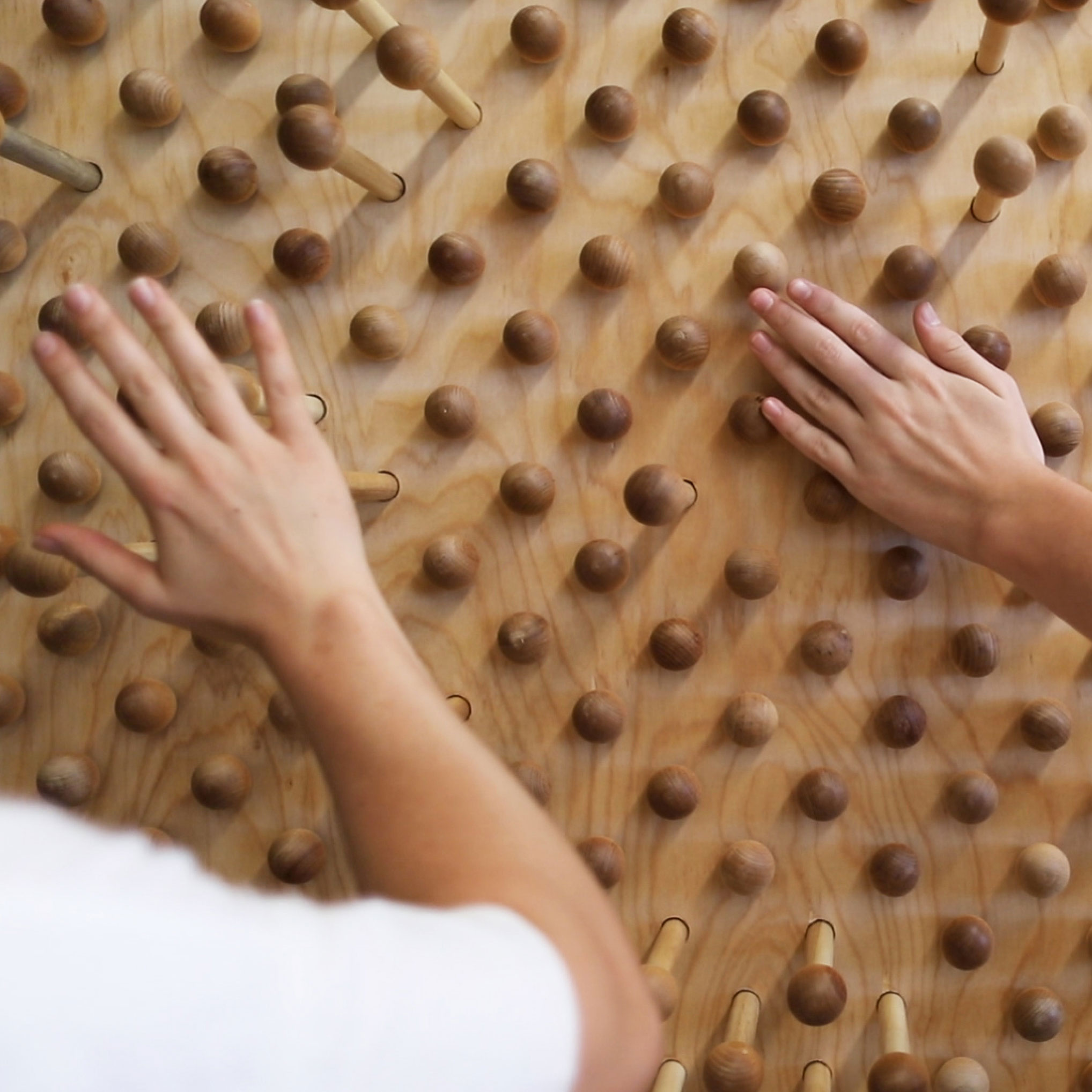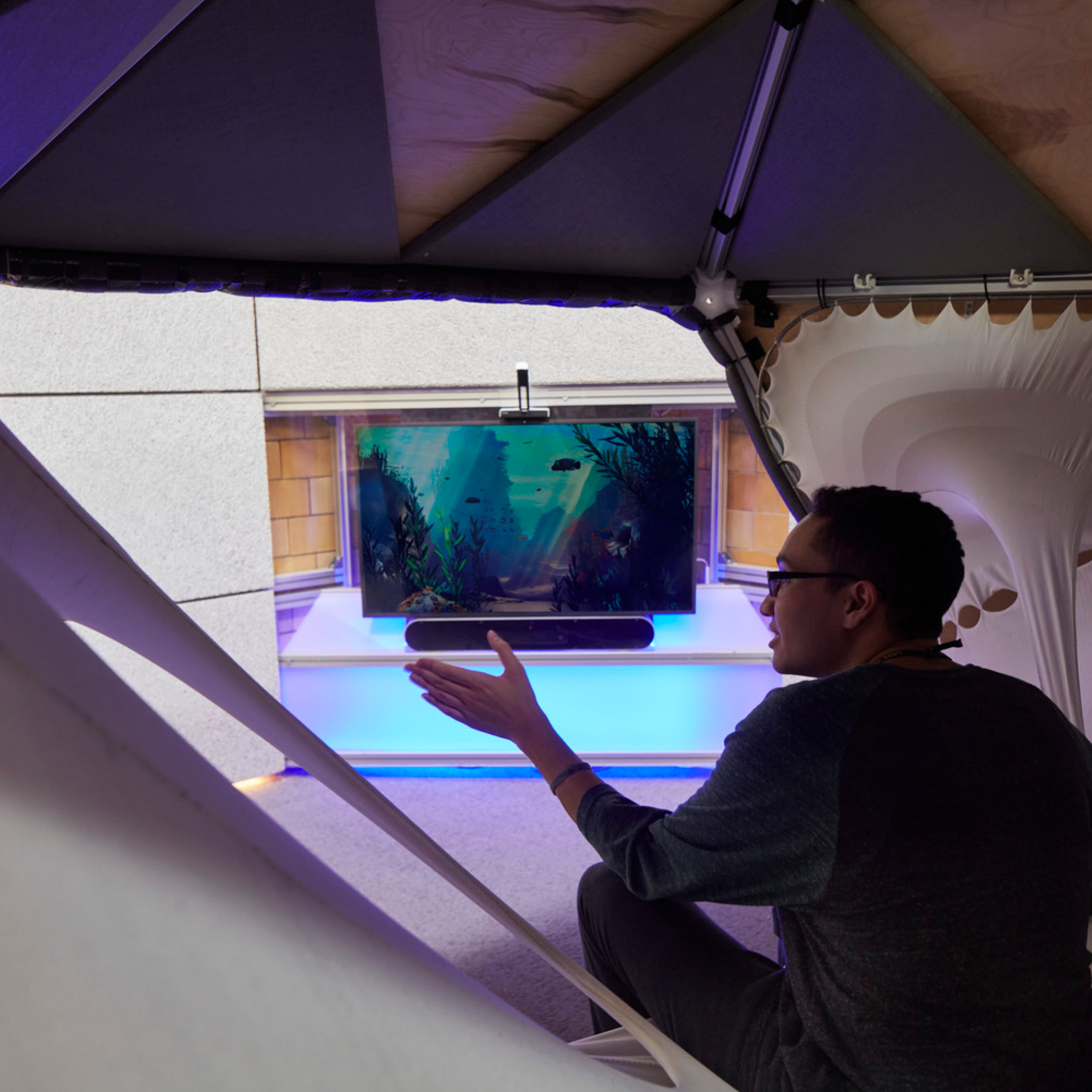
Sensory Well-Being for Adolescents with Developmental Disabilities: Creating (and Testing) a Sensory Well-Being Hub
- Upali Nanda, PhD
- Lisa Adams
What is the Aim
Challenge
Developmental disabilities—e.g., autism spectrum disorders (ASD), cerebral palsy—involve early onset of physical and/or cognitive impairments and often accompany abnormal sensory processing. One in 59 U.S. children is estimated to have ASD, and those with ASD tend to have more atypical sensory processing. High sensory stimulation in schools can interfere with students’ learning. A sensory room may help both hyper and hyposensitive students re-engage with learning using sensory interventions.
At Lane Tech College Prep High School in Chicago, about 60, 14-21-year-old diverse learners with developmental disabilities were in the special education program. The school wished for a sensory room, and Citizen HKS worked on the project pro bono.
The insufficient evidence on the efficacy of sensory rooms made us reframe the challenge: Can we design a scalable and flexible prototype that can be implemented in various learning environments and host a wide range of sensory interventions? Can we assess the efficacy of various sensory interventions in the hub and the hub as a whole? Can we propose an informed menu of design choices for specific individuals based on the data? And finally, can we investigate what impacts this project generates?
Aim
This study aims to create and test the efficacy of a sensory well-being hub prototype for diverse learners. The objectives are to:
1. Create an adaptable prototype for the unique needs of diverse learners.
2. Identify:
- Hub usage patterns.
- Most frequently-used sensory interventions.
- Sensory intervention usage by ASD vs. non-ASD students.
- Associations between sensory profiles and sensory intervention usage.
3. Assess changes of students’, parents’, staff’s well-being and staff’s job satisfaction over time.
What We Did
Approach
Design and research were closely interwoven and iterative contrast to the traditional approach of research, design and then post-occupancy evaluation. Rooted from the double-diamond approach by Design Council, the triple-diamond illustrates the diverging and converging cycles.

Method
A mixed-methods approach was used including literature reviews, expert interviews, surveys, focus groups, field observations, sensor data and archival hub-visit logs and student records during an academic year after the installation. A scientific advisory summit invited six global experts, designers, and researchers to share insights and feedback on the hub design. Computational design and in-house fabrication, strategic design partnerships, simulations, and scenario testing supported the design process. Parent consent for data collection was acquired after research approvals. In addition to aggregated-data analysis, individual-level analyses were performed to create PlaceRx — that is, a set of personalized recommendations of sensory interventions.
What We Found
Results
The design principles reflect the findings from literature review and the scientific advisory summit:

The sensory hub was a demountable prototype consisting of three zones: active and respite zones and the cocoon with tensile fabric seating & an interactive media wall.

Summary of our findings from the yearlong study are as follows:
- Students’ hub usage varied widely, suggesting the need for a one-size-fits-one approach.
- The cocoon serves as a semi-enclosed microenvironment that reduces sound and illumination levels. Sound levels were lower by 3 dB(A).
- Some students obsessed over the smallest anomaly that became a stressor for them.
- Compression and proprioceptive interventions were the most sought.
- The beanbag & weighted blanket, the cocoon with tensile fabric & media wall, and fidget wall were most utilized.
- Sensory intervention usage varied by ASD vs. non-ASD students, by situations and and by sensory profiles.
- Students’ well-being in school showed a trend of improvement, and ASD students’ emotional well-being improved between the two semesters after construction, suggesting cumulative effects.
- Hub usage may be subject to school’s policy of hub usage, staff’s comprehension of sensory interventions, and perceived eligibility of hub visits.
- Unobtrusive measurement via sensors has an untapped opportunity for research using vulnerable populations.
Deliverables
- A prototype kit-of-parts sensory well-being hub with design principles.
- A research report.
- A tool to use insights from sensory profiles and hub & sensory-intervention usage to create PlaceRX.
What the Findings Mean
Application
The following are guidelines for designers:
- Design/select sensory interventions that vary in the amount of stimulation or can be adjustable.
- Locate the hub close to classrooms while physically separate from them.
- Actively incorporate sound-absorbing materials.
- Make illumination levels adjustable (e.g., dimmable lighting, curtains).
- Select durable materials.
- Create a flexible and adaptable system for future replacement of underutilized/ damaged sensory interventions.
- Leverage tactile and compression elements.
- Minimize potential irritants such as sharp edges and narrow grooves not to prompt obsessive behavior.
- Minimize small fonts or buttons on a remote controller for those with visual/ motor impairments.
- Design sensory interventions intuitive.
- Provide a hands-on orientation for staff and a manual.
- Document how students use the hub to assess the efficacy of the design, which can contribute to PlaceRx.
Future
The cocoon will keep evolving and be deployed into various environments. Going forward, we see sensory well-being as a core mandate of ALL built environments.
Acknowledgments
Team Members:
Dr. Giyoung Park
Dr. Upali Nanda
Jonathan Essary
Lisa Adams
Melissa Hoelting
Sean Ahlquist
Funding:
American Society of Interior Designers
Lane Tech Alumni Association




